After many years in sales, sales leadership, and sales enablement, I recently made the decision to join Andy Whyte and the team at MEDDICC. We help sales-driven organizations adopt and leverage MEDDIC (in its various forms) to increase sales performance.
So it goes without saying: I believe MEDDIC has a bright future.
The Rise of MEDDIC
“On what basis?” you might ask.
To answer this question, I think it’s useful to consider what has propelled the adoption and proliferation of MEDDIC and then how this might bode for the future.
MEDDIC was originally created for an organization (PTC to be specific) selling a disruptive, transformative solution to complex (political) organizations. So MEDDIC is not for everyone. But for those who are selling in this kind of complex environment, MEDDIC is purpose-built. This all lines up with the fact that MEDDIC has dominated the world of SaaS. It’s very common to have MEDDIC in the sales job descriptions posted by these high-growth businesses.
WHY MEDDIC STANDS OUT
MEDDIC is first and foremost about outcomes. It encapsulates WHAT must be accomplished over the course of a sales cycle. So, in no particular order, here are a few reasons why (I believe) MEDDIC has been so durable since its creation in 1996.
MEDDIC directs the seller to the outcomes that must be achieved during a winning, value-driven sales cycle.
In brief, MEDDIC directs sellers to:
-
Generate metrics (the measurable impact of your solution) that justify the investment,
-
Align with the economic buyer(s) who have the final yes or no decision,
-
Educate the stakeholders and favorably influence the customer’s decision criteria
-
Negotiate the sequence of events (decision process) that the customer will use to evaluate, gain consensus, select and purchase,
-
Discover (identify and implicate) the customer’s pains that drive the urgency of their decision,
-
Identify and develop Champions with whom we are aligned to elevate our solution vs. the competition and drive through the process to achieve the targeted business outcomes.
MEDDIC IS COMPATIBLE AND ADAPTABLE
By focusing on the WHAT, MEDDIC allows sales leaders to develop their own sales playbooks built on top of MEDDIC’s proven fundamentals. These playbooks incorporate the best ideas from their own expertise or from other thought leaders.
The organizations that I’ve worked with (innovative, sales-led SaaS) have had very similar sales playbooks that typically include these or similar sales stages:
-
Profile - Planning, prospecting, initial contact
-
Qualify - Initial discovery, initial value hypothesis, new business meeting
-
Scope - Additional discovery, technical deep dive, preliminary business case
-
Executive Alignment - Present initial findings and make a “Go - No Go” decision
-
Validation - If “go” then complete validation of solution and business case
-
Negotiate - Completion of final proposal including services and success plan
-
Close - Complete decision and purchase processes.
-
Implement - Transition to delivery
-
Value Realization - Adoption. Success management & measurement.
-
Expansion & Renewal - The progression that follows value realization.
In addition to these kinds of sales stages that are supported by the fundamentals of MEDDIC, there’s an array of great content that can help drive smart sales execution. At PTC we lived MEDDIC but we were also reading “Power Based Selling'' and “Selling To VITO.” More recently sales-driven businesses have embraced “The Challenger Sale,” as an excellent complement to MEDDIC and MEDDIC-defined sales stages. Sales leaders can modify and fine-tune the HOW TO, as long as the fundamental outcomes are maintained.
As a quick illustration of this point, I recently worked with sales consultants who are experts at executive engagement. Their expertise and know-how were significantly valuable to our sellers and the techniques presented were harmonious with the fundamentals represented by MEDDIC and our sales playbook.
Combining sales stages and methods with the fundamental outcomes defined by MEDDIC produces a robust, value-driven playbook. In short, MEDDIC is highly compatible.
MEDDIC HAS "TIMELESS" PRINCIPLES
I’ve heard sales leaders refer to MEDDIC as a set of “timeless principles.” I suppose that’s a bold claim given how quickly the world is changing, and only time will tell, but suffice it to say that there are no “sales techniques du jour” contained within MEDDIC. If you’d like to challenge this idea of “timeless principles” then I would encourage you to rerun the original “win-lose-slip” exercise and see what you come up with. I’m confident you’ll land where we did at the start. 27 years may not equal “timeless” but it’s a start!
MEDDIC HAS UTILITY AND PORTABILITY
The next reason for MEDDIC’s durability: MEDDIC is simple, clear, and has high utility. Among other uses, MEDDIC is regularly used to:
-
Set meeting objectives (meeting planning)
-
Conduct deal reviews and gap analyses
-
Develop and harden sales playbooks including sales stages and success criteria.
This utility has contributed to its portability.
The story that has happened literally, thousands of times: A talented MEDDIC-trained sales rep earns his or her stripes in a competitive selling environment, gets promoted, and then goes on to lead a new organization. (An informal tally shows that over 500 CROs and SVPs came from one of the first 2 generational MEDDIC companies, starting with PTC and almost every one of them started as an AE or first-line manager.) Top-performing sellers and sales leaders take MEDDIC with them. Always. Every time. If you ask them why, they'll tell you, “It was fundamental to my success.”
MEDDIC HAS TRANSPARENCY AND SUCCESS
The next reason is transparency.
I recently had a sales leader tell me that the reason she fell in love with MEDDIC was because she felt it provided a clear, transparent, win-win framework that she could execute with her customers. She said to me: “With MEDDIC there are no hidden agendas.” Users have a sense that they are operating in a very “above-board mode.” Engagement models built on top of MEDDIC are customer-centric and value-driven and can easily be explained to anyone on the customer’s side wanting to know what underpins your customer engagement process. I’ve literally explained MEDDIC to procurement managers who say: “Thank you, we’re aligned… and by the way could you teach this to our other vendors?”
I suppose the last, and best reason is that it works. Just ask the many sales leaders who have led multiple teams and organizations in their steady climb to take on larger and larger responsibilities.
WHERE DOES MEDDIC GO NEXT?
So how does all of this bode for the future?
Let’s look at a few of the key characteristics.
Transparency - With the continued democratization of information, the expectations of transparency will only increase.
Utility - Increased complexity will push organizations to rationalize their methods. Solutions with high “transparency” and “high utility” will continue to find a place in sales-driven organizations.
Compatibility & Adaptability - Let’s start with a few ideas about the future direction of the customer-seller dynamics.
-
Customers will have more sophisticated technologies available, including AI, to help them identify and prioritize opportunities to improve their businesses.
-
Customers will have access to more detailed information providing insights and recommendations to potential solutions.
-
System complexity will continue to increase as customers will continue to battle with the challenges of limited resources, global competition, and competition for talent.
-
Sellers will have more sophisticated tools and resources providing insights into businesses to help solution providers initiate meaningful engagements with customers.
Here are a few ideas on how these dynamics could impact the HOW TO.
-
Customers will be more informed about their business and functional needs which will lead to greater rigor around decision criteria.
-
Early engagements will be more heavily oriented toward return on investment and the seller will provide more specific proof points based on past performances.
-
This will drive increased collaboration with Partners, to develop more integrated solutions. (Note that we are now seeing more organizations implement MEDDPICC where the P is for Partners. Sellers will have to strategically leverage Partners to maximize the customer value delivered and create Win-Win-Win relationships.)
-
Customers and sellers will be smarter about aligning to compelling events and time to value.
-
Strategic relationships, scalability, and time to value will drive the continued growth and adoption of digital and cloud marketplaces.
Our (and your) ability to adapt will continue. There will be other disruptions that will impact the dynamics of the seller-customer relationship and those disruptions will force us to adapt.
But that adaptation will be based on a reliable foundation that will continue to represent the WHAT.



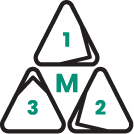
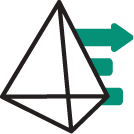
.png)





.png)


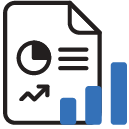


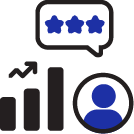

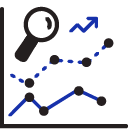

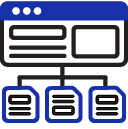










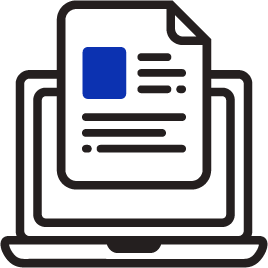



%201.png)








.png)

.png)
.png)

